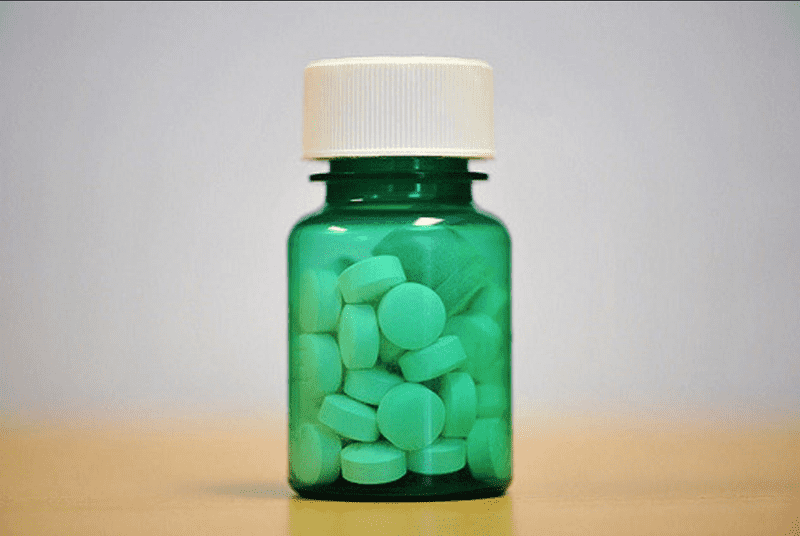Heroin and prescription opioid addiction is hitting record numbers in the U.S. We largely treat these addictions with more opiates like methadone and Suboxone. But The Open Neurology Journal cites studies saying medical marijuana helps with chronic pain, but can also control nausea and vomiting.
Heroin and prescription opioid addiction to drugs like OxyContin and Vicodin is hitting record numbers in the United States. The medical community has largely attempted to treat these addictions—as well as counter the negative effects of opiate withdrawal—with more opioids such as methadone and Suboxone.
But an article published in The Open Neurology Journal mentions numerous studies that found medical marijuana not only helps with chronic pain management, but can also control nausea and vomiting—typical withdrawal symptoms when stopping the use of heroin and opiates.
FOLLOW US ON FACEBOOK & INSTAGRAM
Opioid Overdoses in Every State
The Centers for Disease Control and Prevention released a study about the epidemic of drug overdose deaths in America, and the statistics were startling. Every state has been affected and almost every county in the country has seen an increase in drug overdose deaths. Between 2012 and 2014, the number of heroin overdoses doubled in the U.S. The increase is attributed to addiction to narcotic painkillers.
These numbers aren't just affecting certain areas. New Hampshire, West Virginia and other states with large blue-collar worker populations have also experienced record numbers of rising opiate addiction. Workplace injuries have also been contributing to increasing opioid addiction in the working class.
The rise in deaths mirrors levels of the HIV epidemic at its height in the 1980s and 1990s. In 2014, opioid use accounted for 61% of deaths in the U.S. In order to stem the tide of prescription drug abuse, new legislation has been introduced in an attempt to control prescribing practices. However, as prescription painkillers became less available, addicts turned to heroin.
How Narcotic Addiction Affects the Brain & Body
Drug addiction alters the physical composition of the brain. Narcotic addiction, in particular, rewires the circuits in the brain responsible for reward, consequence determination and mood. With this change in wiring, the brain is no longer capable of functioning without the help of the opioid drug. If the addicted person tries to abstain from heroin or other prescription opioids, they experience symptoms of opiate withdrawal such as:
- anxiety and agitation
- body aches
- chills
- craving the drug
- vomiting
- diarrhea
- nausea
These opioid withdrawal symptoms can increase in severity, lasting a few hours to a few days. And, if the addiction began as a result of using drugs for chronic pain, withdrawal symptoms can worsen as the pain from the condition plus the pain of withdrawal intensify.
Prescription Attempts at Recovery from Opiate Addiction & Withdrawal
The common medical practice for treating opioid addiction is to prescribe more drugs to mask the opiate withdrawal symptoms.
After the initial withdrawal period ends, maintenance drugs are prescribed. Methadone, naltrexone, Suboxone and other medications are used to deter abuse, but none of them completely end the addiction process, keep withdrawal symptoms from occurring, or heal the connections in the brain.
How Medical Marijuana Can Help End the Cycle of Opioid Addiction
While most of the methadone-based treatments prescribed in the treatment of heroin and opiate addiction can produce the same kinds of highs—as well as addictions—created by the drugs themselves, cannabis can treat addiction without the resulting euphoric feelings. Of the 400 or more chemical compounds in cannabis, only tetrahydrocannabinol (THC) produces a high. Many forms of cannabis can be grown and processed without this factor, which makes marijuana even safer to treat addiction than other drugs are.
RELATED: CANNABIS AS AN EXIT DRUG FOR THE OPIOID EPIDEMIC
In addition, the body contains the endocannabinoid system (ECS), a natural system for healing itself through decreasing inflammation and pain while increasing immunity. It works in a very similar way to the cannabinoids in medical marijuana.
Through proper use, cannabis supports the ECS and can actually rewire the brain, unlike methadone treatments which merely block chemical transmission while it's in use. This means that once the person stops taking methadone, the brain hasn't healed and will still seek satisfaction through cravings for heroin or other opiates. Cannabis, on the other hand, changes the composition of the brain so the cravings are no longer present.
Not only does the use of medical marijuana promote the body's natural healing systems, it helps correct the underlying disease. Instead of masking or creating side effects, medical marijuana can be a real solution in combatting the problem of heroin and opiate addiction—and subsequently, opiate withdrawal.
Photo credit: Wil Taylor
If you’re new to cannabis and want to learn more, take a look at our Cannabis 101 post. HelloMD can help you get your medical marijuana recommendation; it's easy, private and 100% online.
